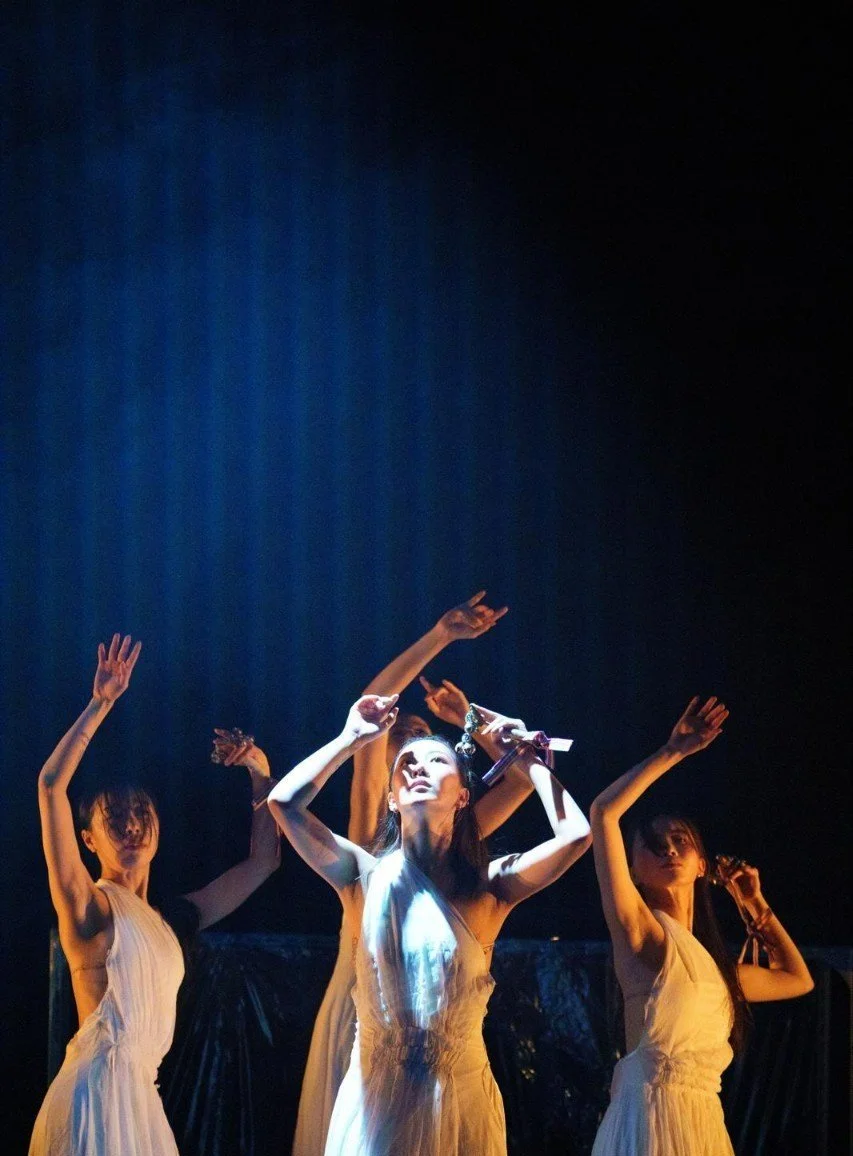Embodying the climate crisis and reckoning with the body
Responding to Sleeper by Jajack Movement
Sleeper / Photograph: Aravinth Rajan
On the leaflet passed out at the end of the show, director and choreographer Kim Yumi explains that Sleeper responds to the worn-out human spirit.
*
It begins with a translucent rectangular prism, tinged blue by the lights. Inside, there is a dancer curled up into himself. I don’t realise he’s there for several minutes. Not until he begins to move.
*
The object on stage, and the dancer within it, are there from the moment we arrive in the room. T and I sit right in the front row. This vantage point will allow me to focus, because almost always, about halfway through any show, concert, reading, or other event, I glance around the room and look for any other Person of Colour in the audience. But from the front row, it’s impossible to do so inconspicuously. I don’t want to be distracted tonight. On this particular evening, I don’t want to know.
For the blissful forty minutes spent in that Dance Base studio, it is just me, my partner, and the dancers from the Korean group, Jajack Movement.
*
I feel the urge to make it clear that I don’t actually want to write about Edinburgh’s specific brand of whiteness again (and again and again), despite the fact this theme breaks through into everything I create. I know it can be exhausting to read through a piece that is meant to be responding to climate crisis and dance, and continuously bump up against the same tropes of racialised experience. The lamentation of being the only one in the room is blatant and widely understood as painful by most people who I think encounter my writing. But despite how it irks me to put down those obvious words, it is important to do so precisely because they underscore so many of my experiences, because I always return to them, because they are so irritatingly true.
*
It is the evening of Tuesday, 6th August. I lean forward in my seat, shutting off any sense of peripheral audience members. The show officially begins with four female dancers in two pairs. They mirror one another’s actions, streaming together like a rolling river. Initially, the mood is dark and reflective. The space of the stage is rife with potential energy, which then flows out and into the mesmerising and exact movements of the dancers. I watch in awe, while a heaviness, a darkness, swells in my chest. I try to understand what unnerves me. Is it the intensity of the music, frothing with sounds of water, building up slowly to a sound that feels sharp and chilling? Or is it the expression on the closest dancer’s face, her hair sometimes obscuring what I read as a mixture of hard resolve and anguish?
Sleeper / Photograph: Aravinth Rajan
When Myeong-Hoon Jung, the dancer trapped in the prism, pushes his body against the cellophane, the contours of his figure protrude through the threshold. The cellophane stretches. He is unable at first to break through, and I resonate with his need to escape whatever trauma is holding him captive. There is a sense of pain and resignation every time the material resists and his limbs retreat. The other four dancers circle him, free from the prism, perhaps representing a kind of rebirth into a different world. But this scene is, at times equally woeful, suggesting a point of transition into a world ever-changed by the current climate crisis.
The figure is not at ease with the architecture – the rectangular apparatus, or the architecture of his own body, from its first unfurling to its later thrashing. There is a ferocity, a struggle plain in the bodily movements, in the splayed out fingers as they attempt to feel out the limits of his cage. When the prism finally ruptures from the force of his upper body, that first puncture is a loud and palpable relief.
*
I am not at ease with the architecture of my own body.
The cage is my worn-out spirit, broken by witnessing over ten months of devastation and death in Gaza, and by the oppressive forces that put all their power and money into the harmful prisms that foreclose us.
I don’t want to know the demographic makeup of the audience that evening because race riots are happening all over the country, and I would just like to forget, for the briefest of moments, the markers of my different body.
If only I could be as resilient as the characters in Sleeper, who Kim Yumi choreographs to courageously “burn away the old and, despite inner pain, discard everything to move forward.”
*
The show moves me, even more so upon learning the choreographer orbits the following two questions that I find myself unable to answer with words. However, by the end of the show, they are instinctually realised by the dancer’s movements:
Why do you cling so much to such a short and painful existence?
What is the meaning of your struggle?
Sleeper at Assembly @ Dance Base, Aug 2-18, 20:30.


